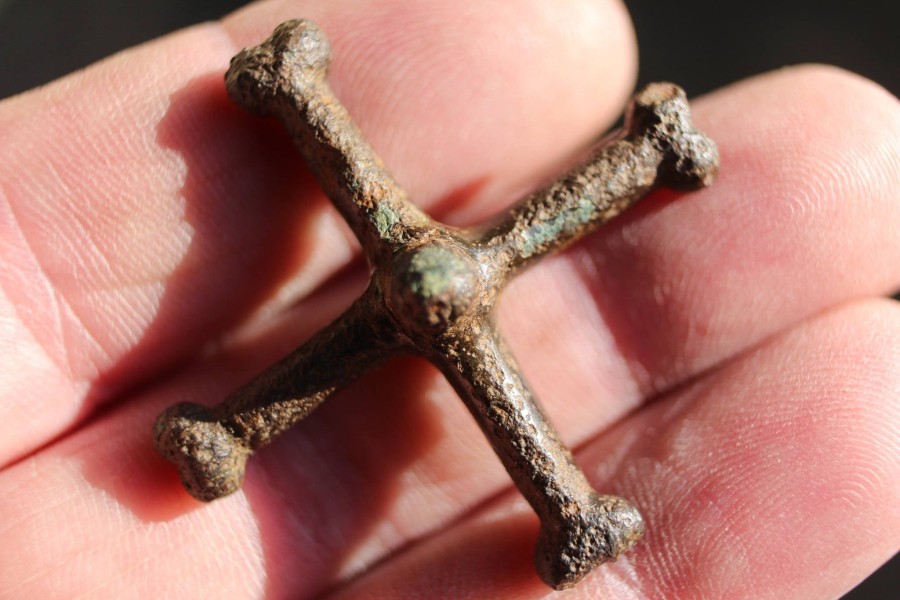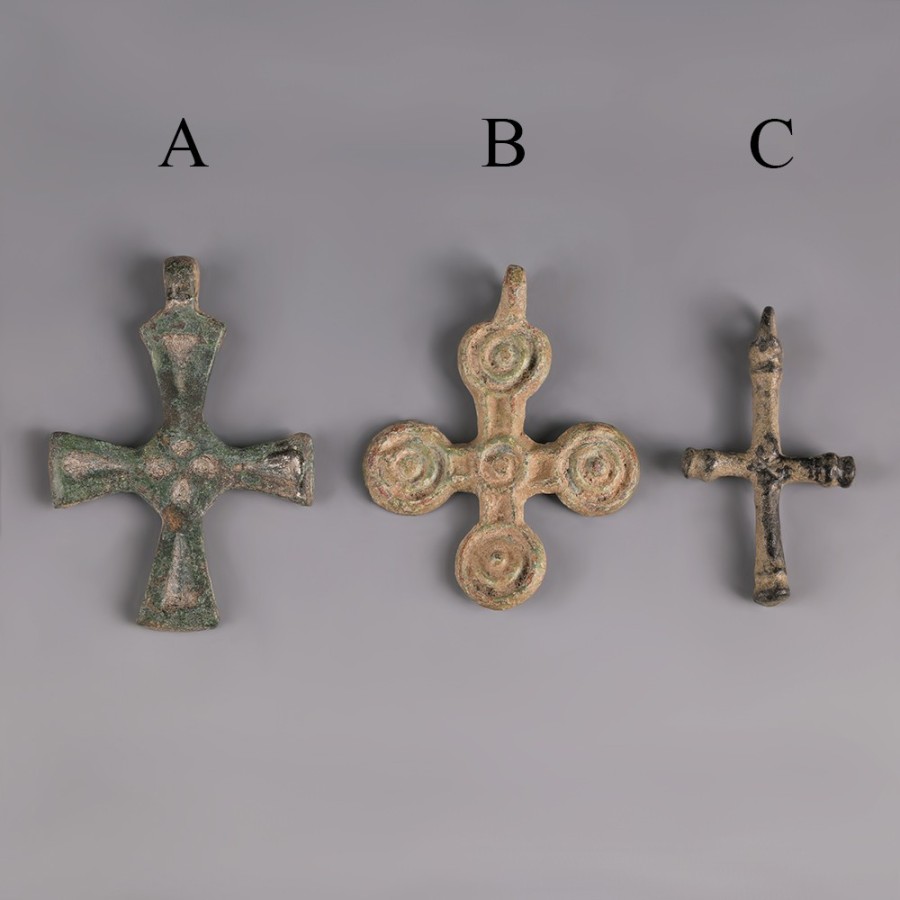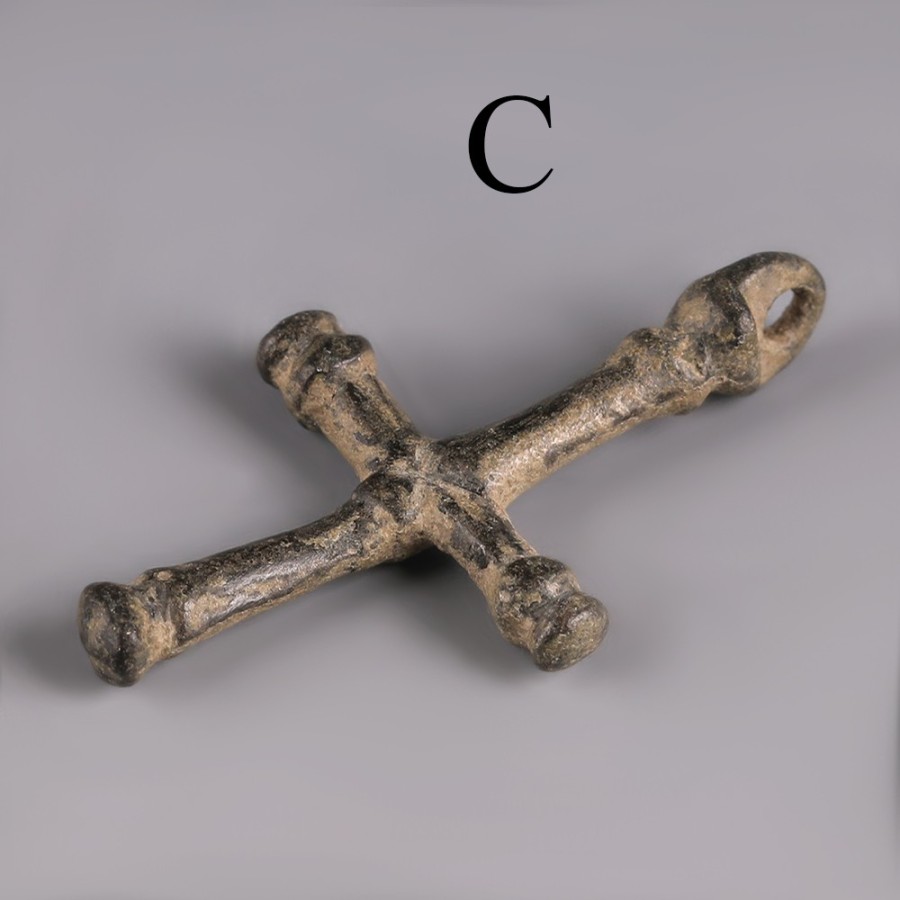Several years ago this strange copper-alloy artefact was unearthed, looking to be complete or perhaps an integral detachable component to something larger.

To make matters worse it was found on a site that yields artefacts and coins from the Iron Age to Medieval times.
Patination is similar to several fibulas and medieval lamp hangers found nearby but that of course is soil PH dictated. Talking of medieval lamp hangers it was suggested this may well be an unusual four-armed variant.
Almost looks a tad ‘piratey’ just missing the skull to the crossbones. Has anyone else found something similar? Or even better can knock this pondering on the head with a positive ID.

During the Roman Empire Christianity was persecuted until the early 4th century AD, with the Great Persecution lasting between 303 and 311 AD. With the Edict of Milan in 313 AD, emperors Constantine and Licinius granted liberty of cult for all religions, including Christianity. However, it was only in 380 AD, with emperor Theodosius, that Christianity became the only official religion of the Empire. Crosses of this type would have been worn in everyday life but also buried with the deceased to seek salvation in the afterlife.

Byzantine jewellery was a continuation of Roman traditions. As in many other cultures throughout history, Byzantine jewellery acted not only as an embellishment, but most importantly as a direct display of someone’s wealth and social status. Interestingly, it also acted as a diplomatic tool. Christian religion was very much at the heart of Byzantine culture, politically, socially and artistically. It was an empire run as a theocracy, ruled by God working through the Emperor, and political ideals were largely informed by Christian values.
 This permeated visual culture as well, not only in terms of art that was explicitly religious in its purpose. With Christian religion becoming the primary religion across the Byzantine Empire, Christian iconography became an extremely popular decorative motif displayed on many smaller decorative items and wares. Crosses as a symbol of the crucifixion and the promise of salvation and everlasting life were the first Christian imaginary to appear on earrings, rings and necklaces, while depiction of saints, angels and the Virgin appeared around the 6th century AD.
This permeated visual culture as well, not only in terms of art that was explicitly religious in its purpose. With Christian religion becoming the primary religion across the Byzantine Empire, Christian iconography became an extremely popular decorative motif displayed on many smaller decorative items and wares. Crosses as a symbol of the crucifixion and the promise of salvation and everlasting life were the first Christian imaginary to appear on earrings, rings and necklaces, while depiction of saints, angels and the Virgin appeared around the 6th century AD.